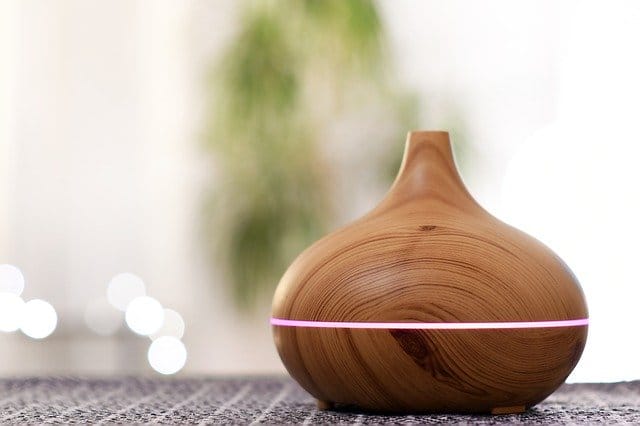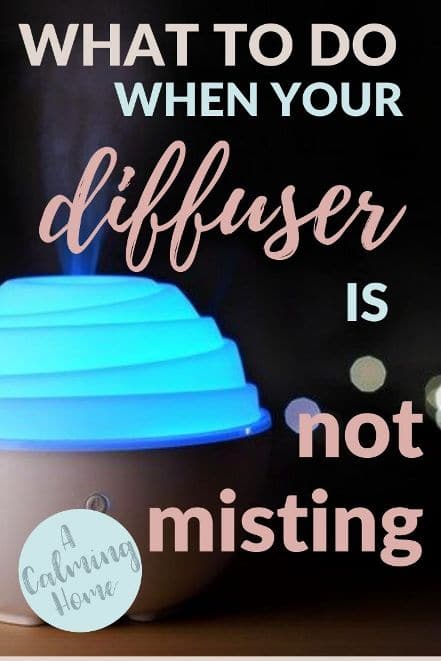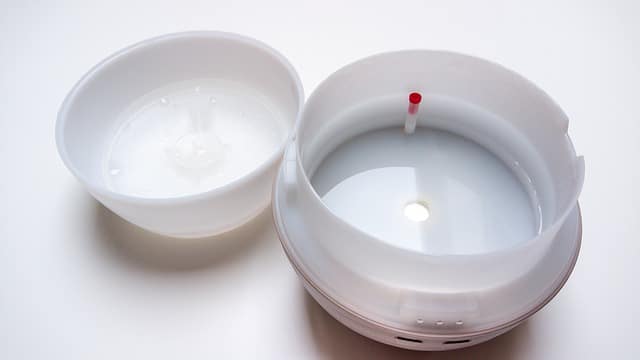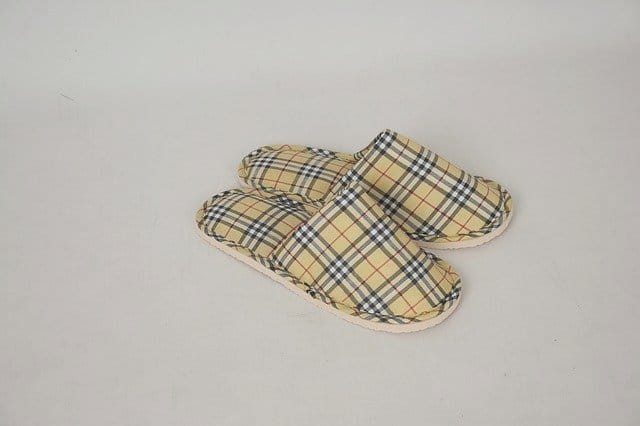
I had some good years using my essential oil diffuser, but one day, for some reason I’m not aware of, it just stopped misting.
While it may produce just a little bit of mist, most of the time it’s comparable to a thin trail of smoke that you’d get after you’ve blown out a matchstick.
I’ve searched online to try and see what the problem could be and found out that it is quite a common problem for most diffusers, most especially those that were bought cheaply online.
In this post, I’ll show you how to prevent this problem and how to troubleshoot a diffuser that is no longer misting as it used to.

This post contains affiliate links for your convenience.
For more information, see my disclosures here.
Is the problem caused by a poor quality diffuser?
While there are many diffusers sold in the market by different manufacturers, they all work in the same sense in that they vibrate at an ultrasonic speed such that the particles from the water and essential oils disperse into the air to leave a desirable scent.
The main benefit of an ultrasonic diffuser is the capability to diffuse aromatic oils without degrading its therapeutic properties, as it would with oil burners (because it’s then exposed to heat). This is especially important when using expensive essential oils, like Rose. And the mist that an ultrasonic diffuser emits is not bad as it would be when burning an incense.
However, the effectiveness in their health claims differs widely depending on the quality of the essential oils itself, as well as the durability of the diffusers.
Some essential oils, like citrus, eat away at plastics overtime. Diffusers that are mostly made of plastic can react with these oils and create a toxic concoction that would eventually be released into the air.
So while there are better diffusers out there, they will all eventually wear down at some point. It’s when we encounter these problems that the quality of its make will be important.
If the diffuser comes from a reputable manufacturer, it will most likely have a warranty and a support service in place that could repair, exchange, or refund your purchase.
Here are some things to consider when troubleshooting a diffuser that is not misting:
Consider: Water Temperature
It’s surprising to note that the temperature of the water could affect how much mist could be emitted by the diffuser because of a change in its density.
As explained in science, cold water has greater density because the molecules pack themselves together tightly so there’s not much space to move around.
Greater density means that it would take more energy to vibrate the cold water to excite the molecules enough to raise it up in the air.
On the other hand, warm water is less dense which means that its molecules can bounce farther apart and rises above colder water. You’ll notice this when swimming in the ocean where the water becomes colder as you go deeper down.
Suggested:
Use tepid or lukewarm water, especially in colder climates or during cold weather.
Consider: Water Mineral Content
Different diffusers require different types of water to work effectively.
Some diffusers recommend using distilled water to lessen the buildup of mineral deposits on the ultrasonic disc. However, most diffusers would instruct you to use only filtered, tap water or spring water.
The mineral content in the water affects the diffusion because the ultrasonic plate uses the minerals to vibrate the water molecules. Water with a higher mineral content would usually produce more vapor because the ultrasonic disc can vibrate it more effectively.
Suggested:
Follow the user manual for the recommended type of water. If in doubt, use filtered water and see how it goes.
Consider: Water Level
Over filling the unit may cause some internal leakage in the compartment and create some serious damage in its electric board.
Too much water will also mean that the ultrasonic plate will need to work harder to get the mist to come out.
However, if there is too little water, it may trigger the mechanism to stop working at all.
Suggested:
It’s usually recommended to fill the water slightly below the maximum fill line. Check the user’s manual on the correct water level for your diffuser.
Also, avoid bumping or moving the diffuser around while it is full so you don’t risk the water entering other compartments.
Consider: Uneven Surface
Running the diffuser on top of soft surfaces, such as towels, mats, or carpet, may restrict airflow or cause spills or accidental tipping over of the unit.
If the lid is misaligned from its body, the diffuser may leak and cause further damage to the internal compartment.
Suggested:
The most fundamental rule when operating any diffuser is to operate it on any level and hard surface.
Check that the lid is secure and sitting correctly on the base of the unit.
Common problems that you might encounter with your diffuser

Problem: Water Damage
Be careful of water buildup around or under your diffuser. The water can get in through the air vent or via the fan or electronics underneath the unit.
Remember that even though the unit was designed to hold water, the components to operate it can still be short-circuited by it.
Solution:
There should be markings on your water compartment where the air vent is located. Pour away from this area or cover it as you pour when you can.
Don’t remove the lid while the unit is running because this would allow water to drip down and collect underneath the unit.
In the event that water gets into the circuit board or the fan, unplug the unit, clean and remove any water, and let it dry out for a day or two.
Problem: Dirty Diffuser
Over time, your diffuser will build up some oil or mineral deposits, especially on or around the ultrasonic plate. The water compartment may also become discolored and slippery from those build up.
Solution:
Rinse and wipe out your diffuser after every use. This will help minimize the oil and mineral buildup.
Deep-clean your diffuser at least 1 or 2 times in a month.
So how do you deep-clean an ultrasonic diffuser?
- Turn off and unplug your diffuser.
- Wipe out the water reservoir with a damp cloth whilst avoiding the ultrasonic plate.
- Dip a cotton swab in a vinegar solution and gently rub around the ultrasonic plate to remove any extra buildup. If you’re cleaning the plate itself, make sure not to press too hard on it.
- Rinse the reservoir with water; then wipe it clean and dry up excess water with a microfiber cloth.
- Keep it unplugged for a few minutes.
- Refill with plain water and diffuse
Problem: Water is not bubbling
If the power indicator is lit up but there is no ultrasonic vibration or some visible bubbling in the water tank, the ultrasonic plate may have been damaged.
Solution:
You will need to replace the ultrasonic disc. Ask the manufacturer if you can send it in for repair, or if not, to send you a replacement disc with instructions on how to swap it by yourself.
Problem: Fan stopped working
If you can’t hear the fan running and there’s no mist coming out, the fan may be the problem.
While the fan is there to keep the circuit board and LED light from overheating, the main job is to push the mist out of the compartment. If it’s not working properly, the mist will stay inside.
Solution:
Lift the unit up and check to see that air can still freely flow. The unit sucks up while running and over time, small particles like dust or hair can enter the unit and obstruct or even damage the air vent.
If you suspect a clogged air vent, try blowing into the fan or using an empty squeeze-bottle to direct puffs of air into the opening.
STILL NOT MISTING ENOUGH?
If your diffuser still has a weak mist despite going through these troubleshooting steps, then contact the manufacturer for proper cleaning, repair, and maintenance for your particular diffuser.
Alternatively, you may just want to replace the entire unit with a brand new one. I highly recommend something similar to what I use.




